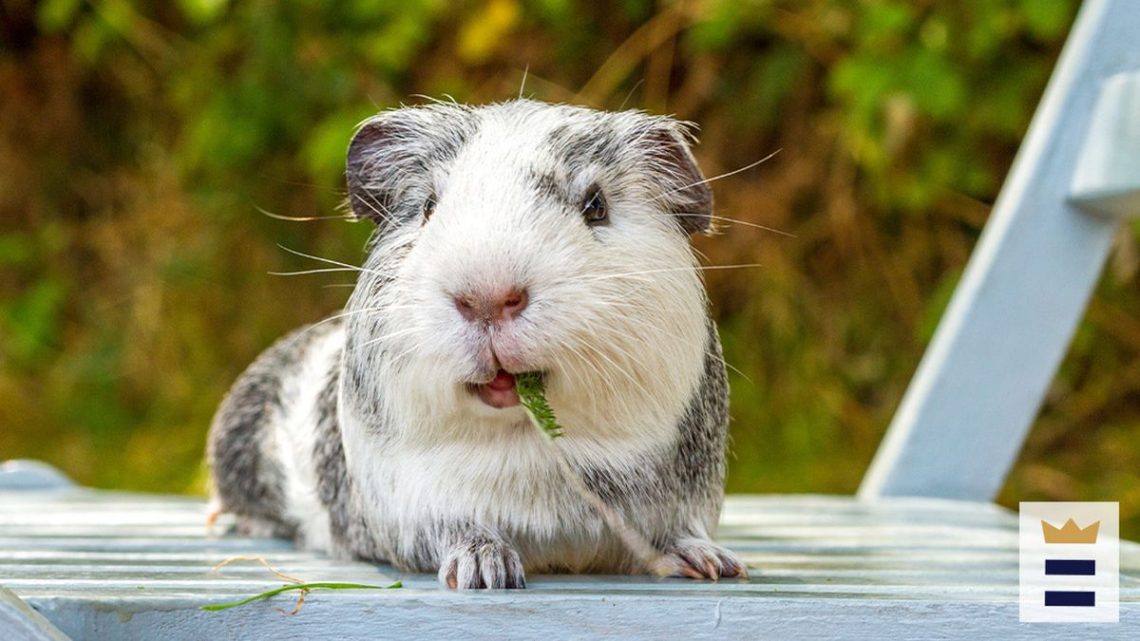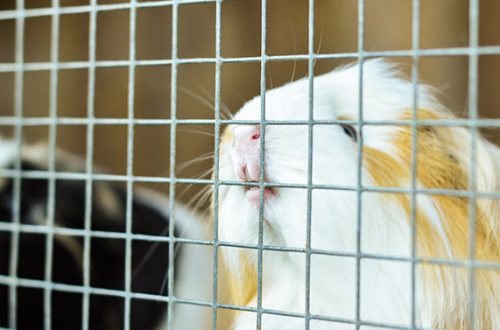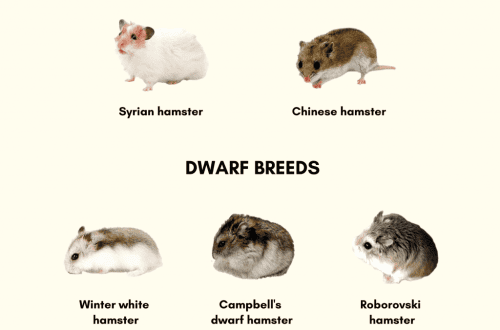
Breeding satin pigs
If you are serious about breeding satin pigs, you will first need to acquire a very high-bred male, who will become your most important pig in the kennel. Excellent breed type and size is very important here, and if you want to produce very high quality litters, you will also need breed females of your chosen color. They should be large enough and without any noticeable flaws. Disadvantages will certainly appear in offspring (as in no other breed) – the special structure of the coat does not allow flaws to be left unnoticed.
Offspring from your satin male and selfie females will be satin carriers. They are the most necessary link in the process of obtaining show-class offspring. By crossing two satin gilts, you will generally produce very small babies, much better if one of the parents is only a carrier.
If you have very good quality females in your litters, then the best thing would be if you keep them for yourself and then cross them with their father. It’s great to have two of these trios in your kennel (mother, father and daughter) if you are just getting started with satins. Of course, you may be lucky and you will be able to get very thoroughbred females, satin carriers, but you will agree that it is much more interesting to create your own line. Alternatively, you can use your own satin female and carrier male – but experience shows that, as a rule, satin females are smaller, tolerate pregnancy less and have more complications during childbirth than satin carriers.
Once your breeding work has begun, be prepared for large litters (five babies are very common). You will also be very surprised how ugly the wool of satin babies looks. She is dark and completely ugly, at first it is even difficult to understand which of the cubs is satin and which is not. But one has only to look closely, the difference becomes obvious: the undercoat (hair at the very root) is much brighter than at the tips, and to the touch they will differ from ordinary wool. In satin carriers, the coat is thicker and denser, although at this stage satin pigs still do not look like adults at all, and the coat of babies is very different both in appearance and in touch. While the kids are growing up, be very selective and keep only the best for yourself. I usually keep one young satin male just in case something happens to my main sire. I keep satin females for exhibitions, and satin carriers for breeding. Needless to say, a huge number of carrier males are also born! But this only helps me.
By 12 weeks, the coat takes on an authentic look, and the satin pig at this age stage is, as they say, at its zenith. This is how it will look further, the formation of the body and coat is completed. At this age, female satin pigs are noticeably smaller than their brothers, even if they are cubs from the same litter.
From time to time you will probably need to add new blood to your line – self blood, in order to continue to improve the quality of your gilts.
The emergence of new breeds of guinea pigs has created the need to cross them with common (homozygous non-recessive) forms in order to obtain “carriers” in order to improve the quality of the offspring. In all these cases, where the desired gene is recessive, the options are:
For example, consider the case of satin pigs:
Self + Self gives 100% selfies Self + Satin Carrier gives 50% Selfies and 50% Carriers Self + Satin gives 100% Satin Carriers Satin Carrier + Satin Carrier gives 25% Selfies 50% Satin Carriers 25% Satins Satin Carrier + Satin gives 50% satin carriers 50% satin Satin + satin gives 100% satin
Heather Samson
The original article is located at http://users.senet.com.au/~anmor/satincavy.htm
© Translation by Alexandra Belousova
If you are serious about breeding satin pigs, you will first need to acquire a very high-bred male, who will become your most important pig in the kennel. Excellent breed type and size is very important here, and if you want to produce very high quality litters, you will also need breed females of your chosen color. They should be large enough and without any noticeable flaws. Disadvantages will certainly appear in offspring (as in no other breed) – the special structure of the coat does not allow flaws to be left unnoticed.
Offspring from your satin male and selfie females will be satin carriers. They are the most necessary link in the process of obtaining show-class offspring. By crossing two satin gilts, you will generally produce very small babies, much better if one of the parents is only a carrier.
If you have very good quality females in your litters, then the best thing would be if you keep them for yourself and then cross them with their father. It’s great to have two of these trios in your kennel (mother, father and daughter) if you are just getting started with satins. Of course, you may be lucky and you will be able to get very thoroughbred females, satin carriers, but you will agree that it is much more interesting to create your own line. Alternatively, you can use your own satin female and carrier male – but experience shows that, as a rule, satin females are smaller, tolerate pregnancy less and have more complications during childbirth than satin carriers.
Once your breeding work has begun, be prepared for large litters (five babies are very common). You will also be very surprised how ugly the wool of satin babies looks. She is dark and completely ugly, at first it is even difficult to understand which of the cubs is satin and which is not. But one has only to look closely, the difference becomes obvious: the undercoat (hair at the very root) is much brighter than at the tips, and to the touch they will differ from ordinary wool. In satin carriers, the coat is thicker and denser, although at this stage satin pigs still do not look like adults at all, and the coat of babies is very different both in appearance and in touch. While the kids are growing up, be very selective and keep only the best for yourself. I usually keep one young satin male just in case something happens to my main sire. I keep satin females for exhibitions, and satin carriers for breeding. Needless to say, a huge number of carrier males are also born! But this only helps me.
By 12 weeks, the coat takes on an authentic look, and the satin pig at this age stage is, as they say, at its zenith. This is how it will look further, the formation of the body and coat is completed. At this age, female satin pigs are noticeably smaller than their brothers, even if they are cubs from the same litter.
From time to time you will probably need to add new blood to your line – self blood, in order to continue to improve the quality of your gilts.
The emergence of new breeds of guinea pigs has created the need to cross them with common (homozygous non-recessive) forms in order to obtain “carriers” in order to improve the quality of the offspring. In all these cases, where the desired gene is recessive, the options are:
For example, consider the case of satin pigs:
Self + Self gives 100% selfies Self + Satin Carrier gives 50% Selfies and 50% Carriers Self + Satin gives 100% Satin Carriers Satin Carrier + Satin Carrier gives 25% Selfies 50% Satin Carriers 25% Satins Satin Carrier + Satin gives 50% satin carriers 50% satin Satin + satin gives 100% satin
Heather Samson
The original article is located at http://users.senet.com.au/~anmor/satincavy.htm
© Translation by Alexandra Belousova





